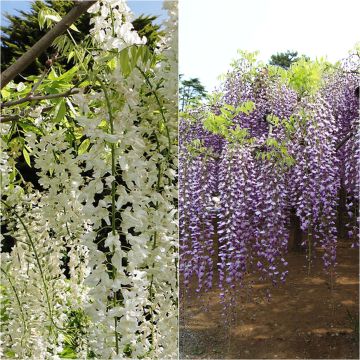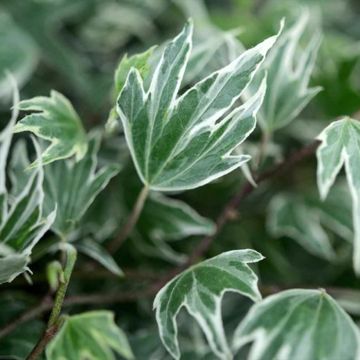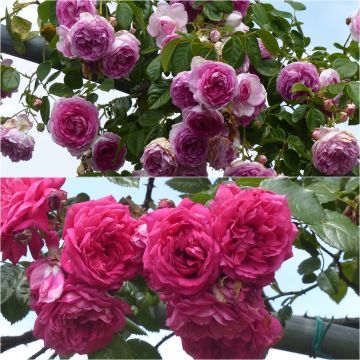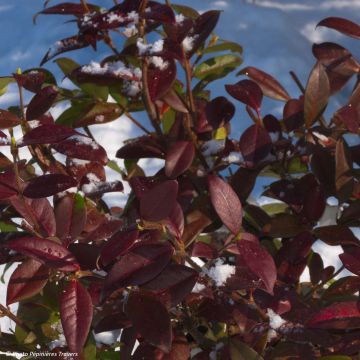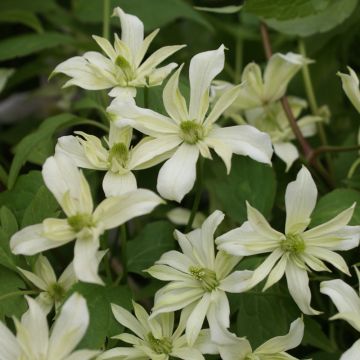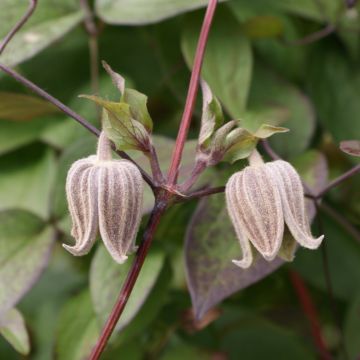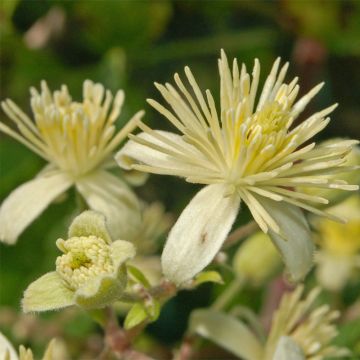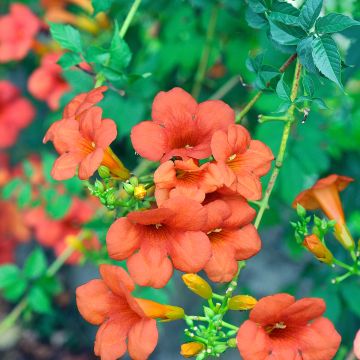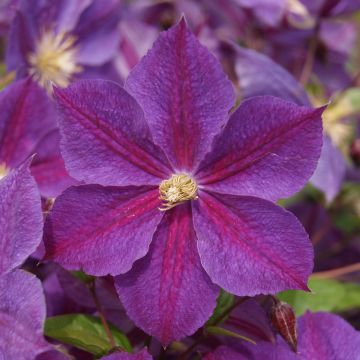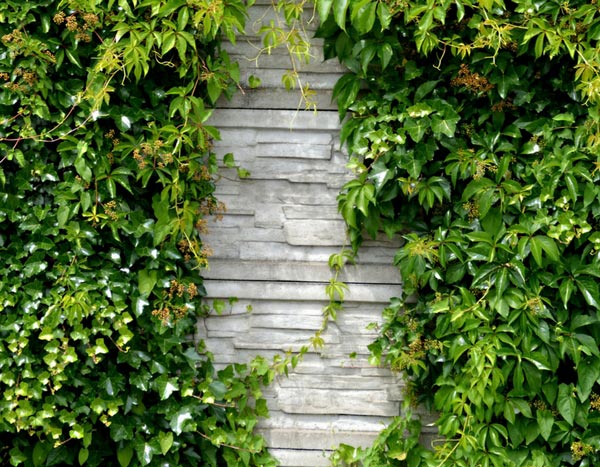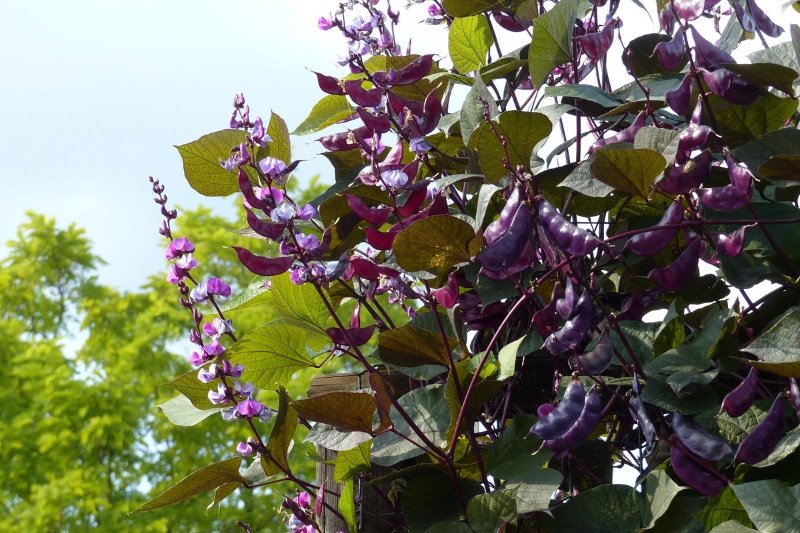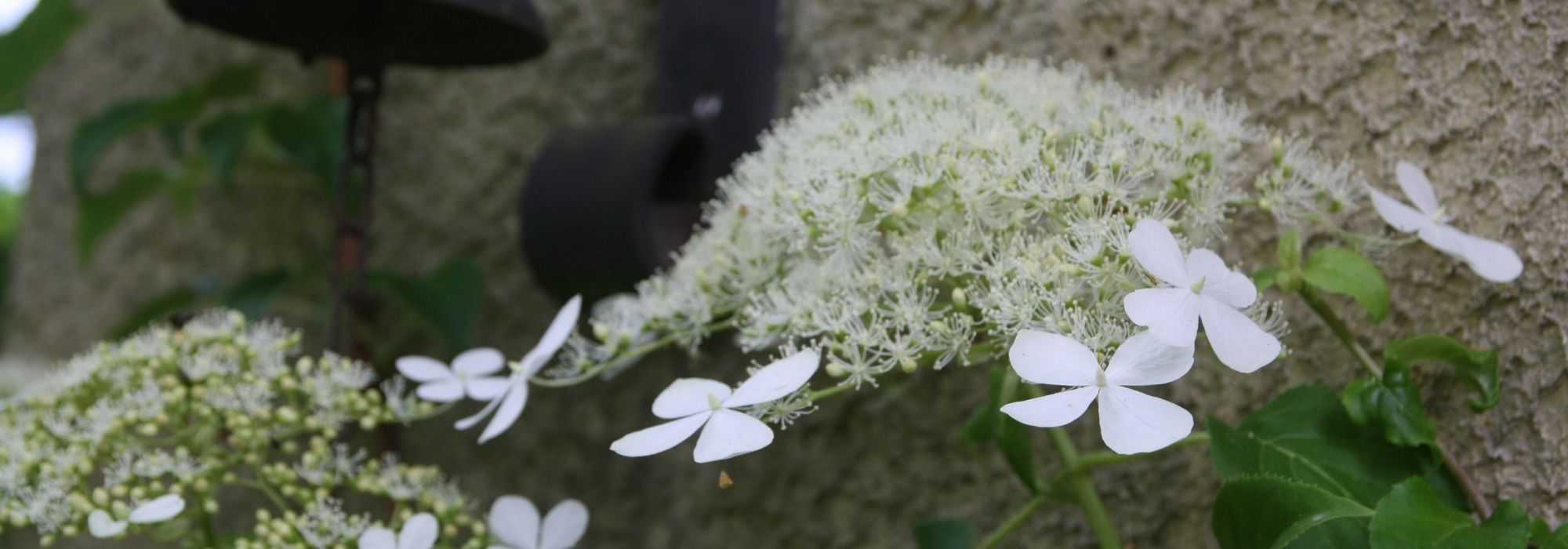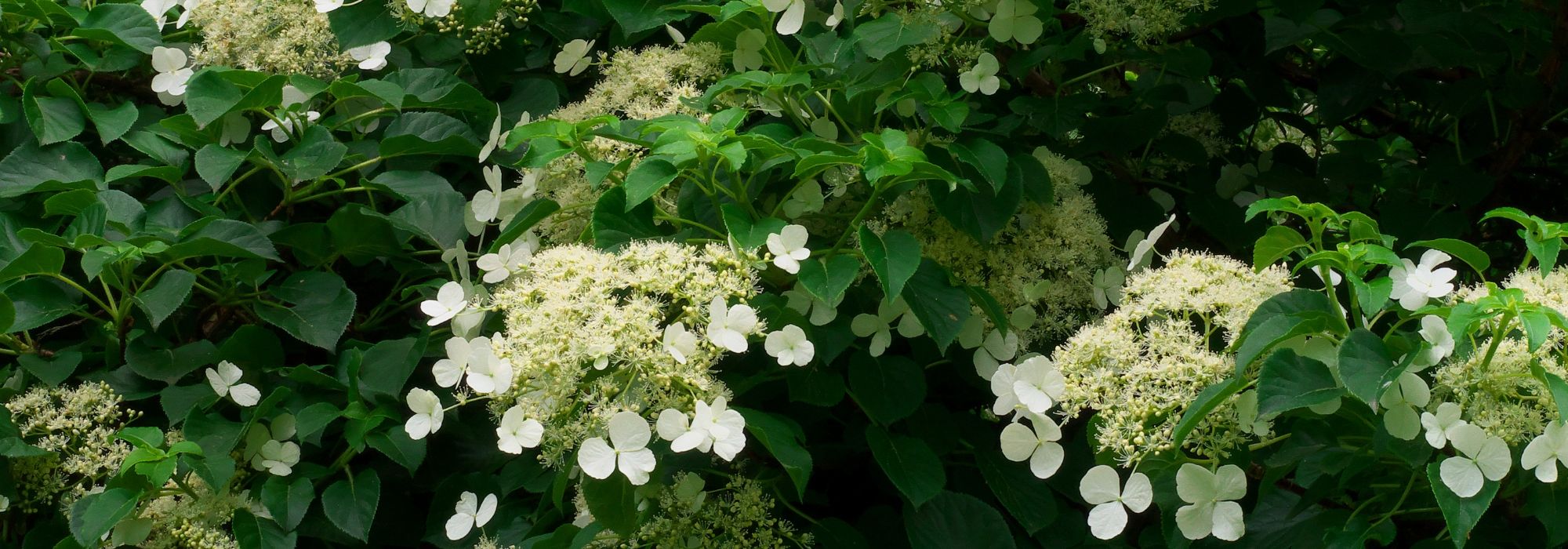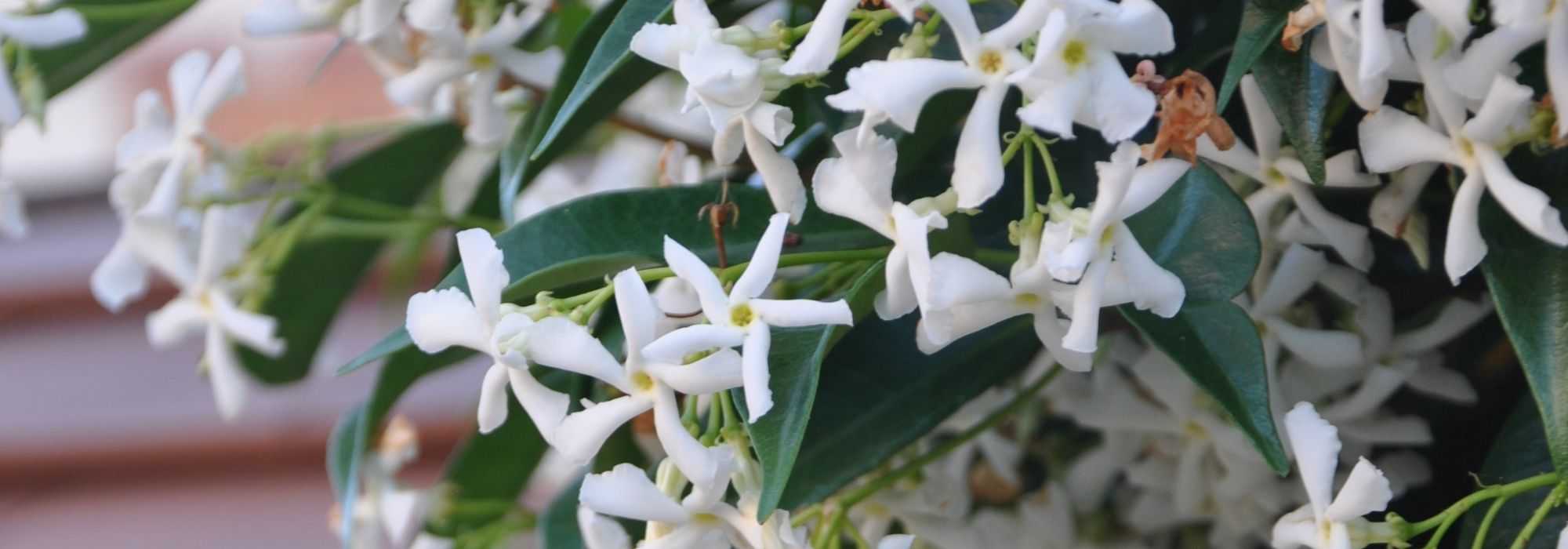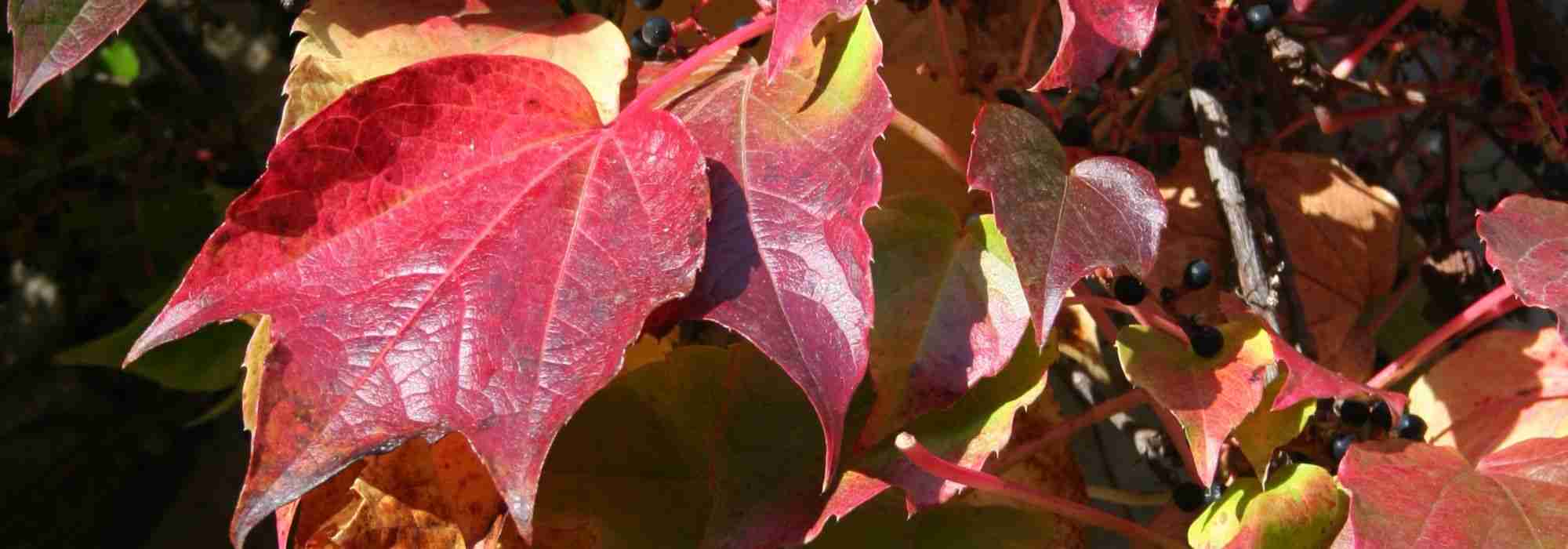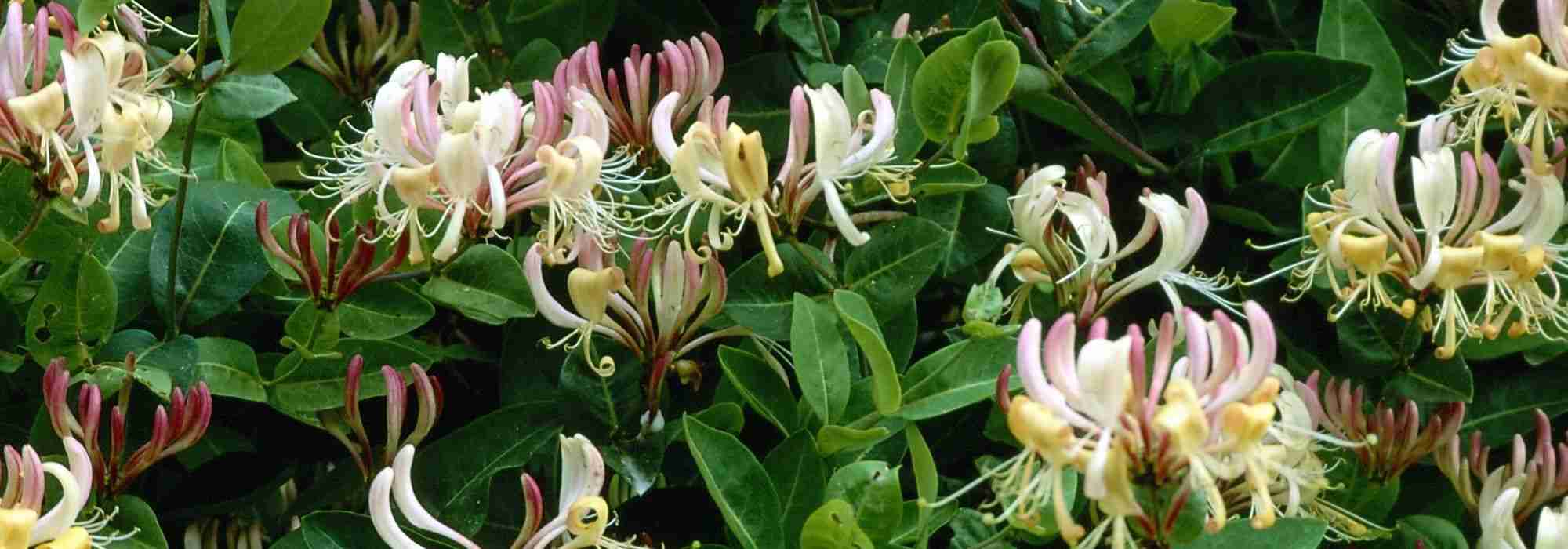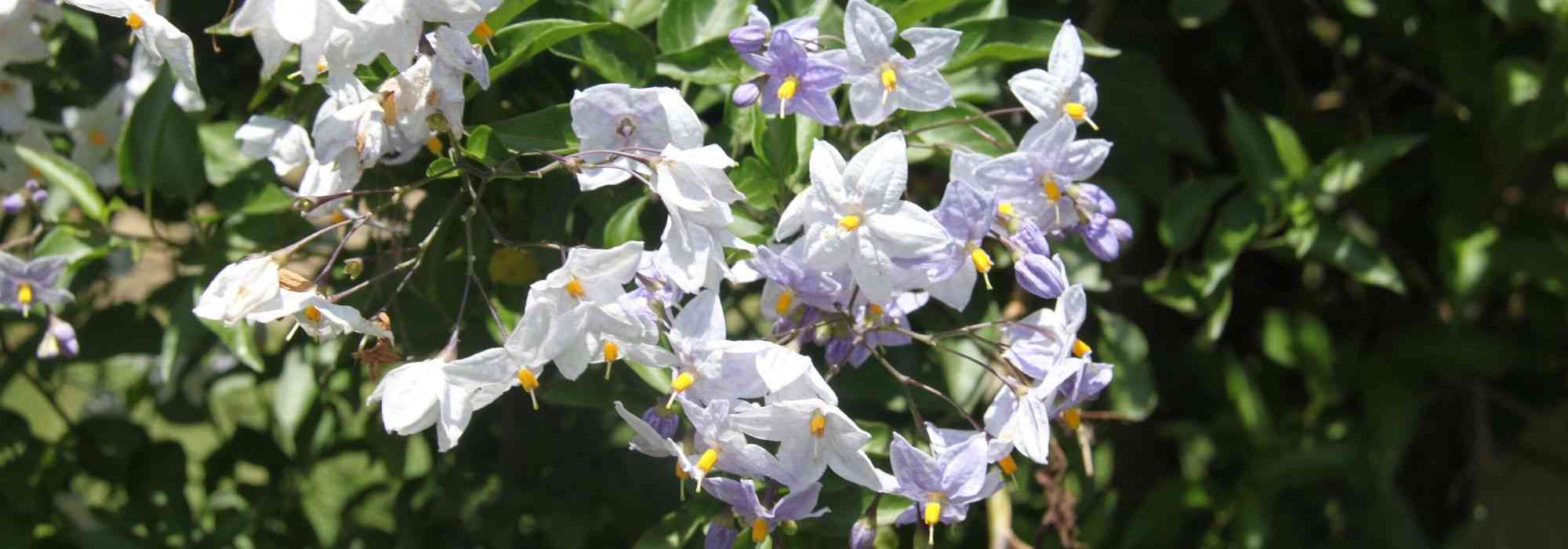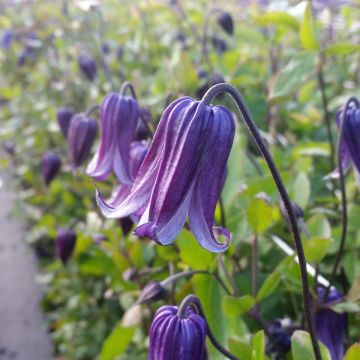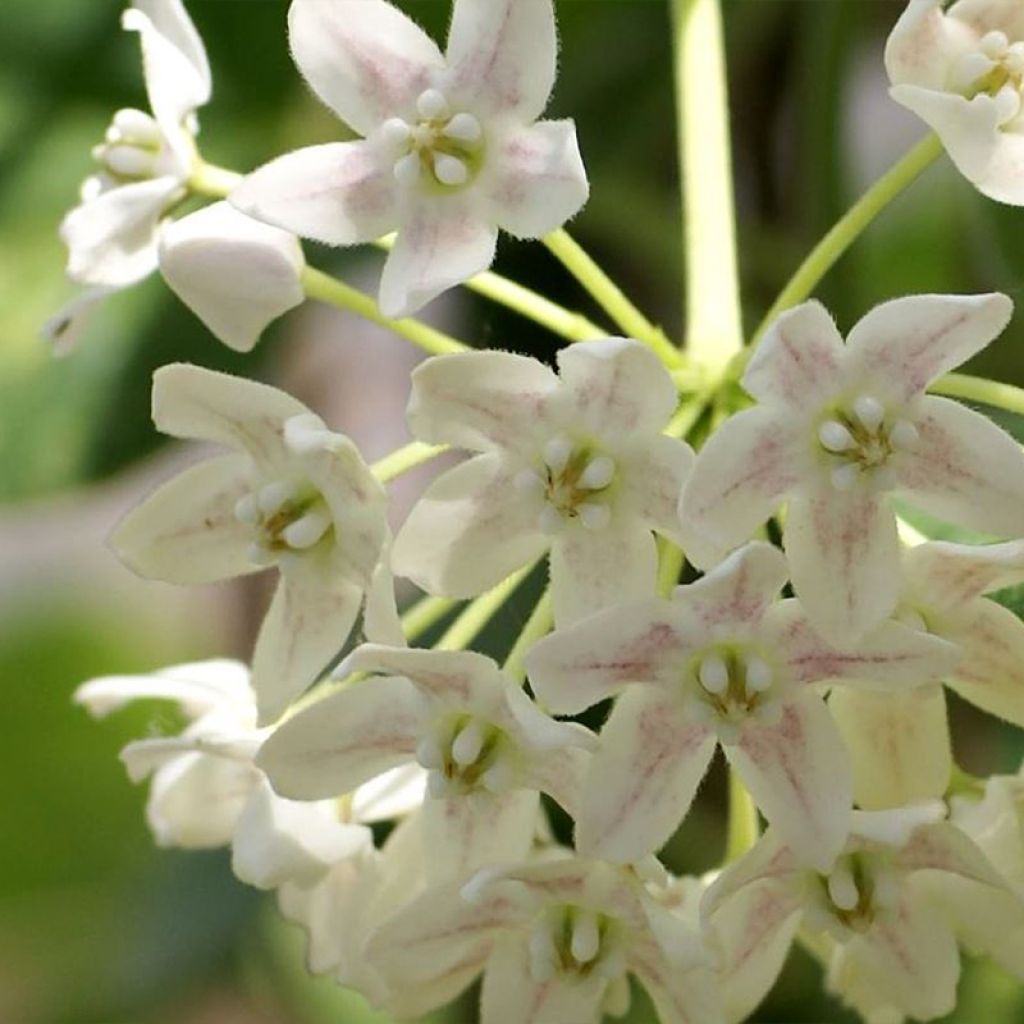

Wattakaka sinensis Variegata - Chinese Wisteria
Wattakaka sinensis Variegata - Chinese Wisteria
Wattakaka sinensis Variegata
Chinese Fringe Flower, Chinese Parasol Tree, Chinese Dregea,
I received a plant that is not very bushy (only one rather scrawny stem) but already has a bud. I can't wait to see the plant flourish :)
Armelle, 04/05/2023
Special offer!
Receive a €20 voucher for any order over €90 (excluding delivery costs, credit notes, and plastic-free options)!
1- Add your favorite plants to your cart.
2- Once you have reached €90, confirm your order (you can even choose the delivery date!).
3- As soon as your order is shipped, you will receive an email containing your voucher code, valid for 3 months (90 days).
Your voucher is unique and can only be used once, for any order with a minimum value of €20, excluding delivery costs.
Can be combined with other current offers, non-divisible and non-refundable.
Home or relay delivery (depending on size and destination)
Schedule delivery date,
and select date in basket
This plant carries a 6 months recovery warranty
More information
We guarantee the quality of our plants for a full growing cycle, and will replace at our expense any plant that fails to recover under normal climatic and planting conditions.
Does this plant fit my garden?
Set up your Plantfit profile →
Description
The Wattakaka sinensis 'Variegata' is a vigorous climbing vine, very unique and uncommon, especially in this variegated form. Its large heart-shaped leaves are green with wide cream variegation. Highly decorative, they are accompanied by a beautiful white-pink flowering in June-July, which is very fragrant. This climbing vine thrives in full sun, or possibly in partial shade in hot climates, in humus-rich soil that is moist but well-drained. Well-adapted to temperate climates, it is moderately hardy.
The Wattakaka was classified in the Asclepiadaceae family, where it coexisted with the Stephanotis floribunda, another climbing vine with a delightful fragrance. This cosmopolitan family included numerous climbing vines, bushes, herbaceous plants, and even trees, mainly in warm, subtropical to tropical regions. This former family is now downgraded to a subfamily within the Apocynaceae family, rich in poisonous beauties, such as Periwinkle or Oleander. The Wattakaka itself has been renamed Dregea, its current name, although its former name is still commonly used out of habit. The climbing stems have rapid growth and can cling to a trellis or tree on their own. Slightly less vigorous than the green-leaved species, this variegated form still grows up to about 5m (16ft) in height and 2.50m (8ft) in width. Deciduous, its foliage is highly decorative with irregular variegation mixing cream-white and green in different shades, so that no leaf looks exactly like its neighbour. Attached to the stems by a rather long petiole, they measure 5 to 10cm (2 to 4in) in length.
The flowering is the second charming feature of this extraordinary plant. The umbels of flowers, 8 to 9cm (3 to 4in) in diameter, appear in late spring, early summer. They consist of about twenty small waxy flowers with 5 white petals tinged with pink, giving them a delicate appearance and a delightful fragrance. Some perceive orange blossom scents, while others sense a scent of privet. A true sensory pleasure that also attracts pollinators, as these charming flowers are highly nectar-rich. The fruits, arranged in pairs, form green horns about 10cm (4in) long, filled with silky seeds that are carried away by the wind.
This climbing vine thrives in full sun but not excessively hot conditions. In hot climates, it is preferable to plant it in partial shade. It prefers humus-rich soils with some moisture, but well-drained to avoid stagnant water, especially in winter. Indeed, Dregea is somewhat sensitive to cold, withstanding temperatures down to -8°C (17.6°F), or -10°C (32 or 14°F) once well rooted and in a location sheltered from cold winds. It can survive in the Orléans region, for example, but may suffer more in the east. In cold climates, it is possible to protect the stump with a good mulch to ensure its recovery. If necessary, prune back this Wattakaka in late winter to remove dry stems. This is why winter drainage is very important, as excess water intensifies the effect of freezing. On the other hand, it is very adaptable to the soil's chemical nature and can tolerate both limestone and moderately acidic soils.
Stylish and romantically charming with its delicate flowers, the Wattakaka will delight enthusiasts of unique plants. There is no doubt that you will surprise your visitors and friends, as few people are familiar with this plant, especially in its variegated version. To accentuate its exotic appeal, you can pair it with the Passiflora caerulea, with its sculptural tropical-looking flowers. Another interesting combination is to plant a Clematis armandii alongside it, a Clematis with equivalent hardiness but with decorative evergreen foliage and a highly fragrant white flowering, early (March-April), which will precede the flowering of the Wattakaka. And to prolong the season of scents, indulge in the Lonicera periclymenum 'Serotina', a Woodbine with white and red highly graphic flowers, endowed with a powerful fragrance that will take over from the Wattakaka's scent until autumn.
Report an error about the product description
Wattakaka sinensis Variegata - Chinese Wisteria in pictures
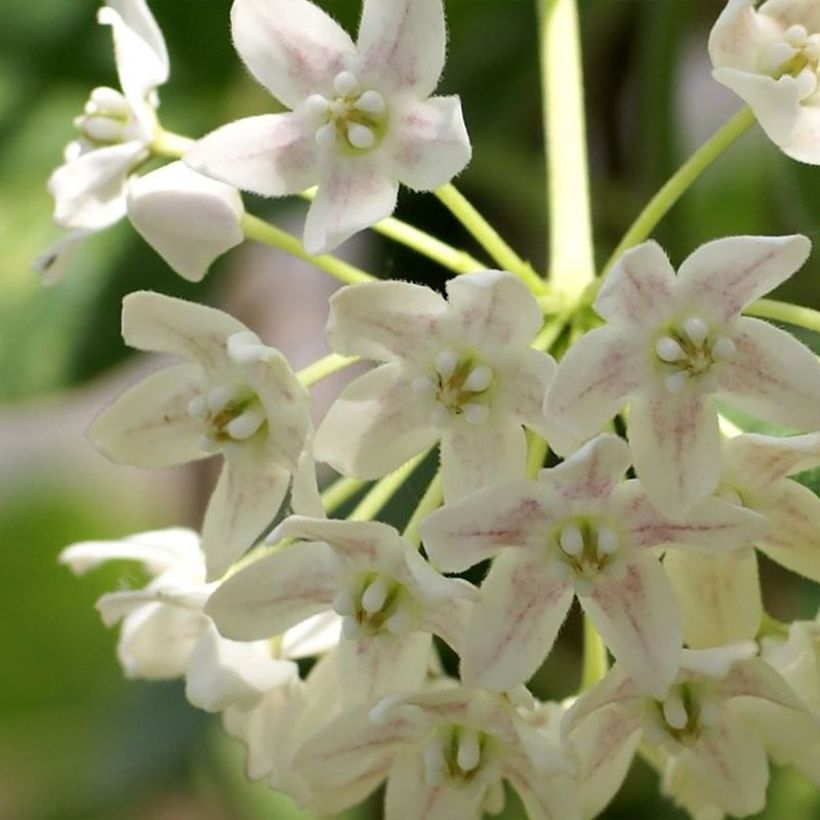

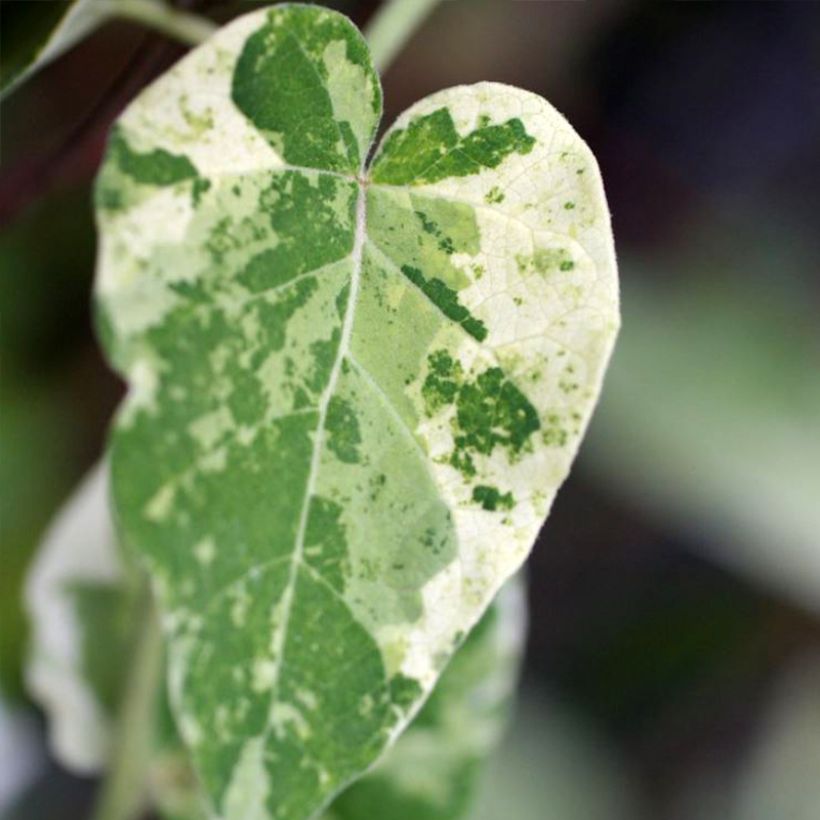

Plant habit
Flowering
Foliage
Botanical data
Wattakaka
sinensis
Variegata
Apocynaceae
Chinese Fringe Flower, Chinese Parasol Tree, Chinese Dregea,
Cultivar or hybrid
Other Climbers A to Z
View all →Planting and care
Plant in a fertile soil, rich in humus, moist but well-drained, preferably against a wall exposed to the sun and sheltered from cold winds. This climbing plant adapts to most types of soil, neutral, acidic, or alkaline. You can prune the secondary stems back to 3 or 4 buds to promote flowering, or at the base if the stems have frozen. Carry out this operation at the end of winter or the beginning of spring.
Planting period
Intended location
Care
Planting & care advice
-
, onOrder confirmed
Reply from on Promesse de fleurs
Similar products
Haven't found what you were looking for?
Hardiness is the lowest winter temperature a plant can endure without suffering serious damage or even dying. However, hardiness is affected by location (a sheltered area, such as a patio), protection (winter cover) and soil type (hardiness is improved by well-drained soil).

Photo Sharing Terms & Conditions
In order to encourage gardeners to interact and share their experiences, Promesse de fleurs offers various media enabling content to be uploaded onto its Site - in particular via the ‘Photo sharing’ module.
The User agrees to refrain from:
- Posting any content that is illegal, prejudicial, insulting, racist, inciteful to hatred, revisionist, contrary to public decency, that infringes on privacy or on the privacy rights of third parties, in particular the publicity rights of persons and goods, intellectual property rights, or the right to privacy.
- Submitting content on behalf of a third party;
- Impersonate the identity of a third party and/or publish any personal information about a third party;
In general, the User undertakes to refrain from any unethical behaviour.
All Content (in particular text, comments, files, images, photos, videos, creative works, etc.), which may be subject to property or intellectual property rights, image or other private rights, shall remain the property of the User, subject to the limited rights granted by the terms of the licence granted by Promesse de fleurs as stated below. Users are at liberty to publish or not to publish such Content on the Site, notably via the ‘Photo Sharing’ facility, and accept that this Content shall be made public and freely accessible, notably on the Internet.
Users further acknowledge, undertake to have ,and guarantee that they hold all necessary rights and permissions to publish such material on the Site, in particular with regard to the legislation in force pertaining to any privacy, property, intellectual property, image, or contractual rights, or rights of any other nature. By publishing such Content on the Site, Users acknowledge accepting full liability as publishers of the Content within the meaning of the law, and grant Promesse de fleurs, free of charge, an inclusive, worldwide licence for the said Content for the entire duration of its publication, including all reproduction, representation, up/downloading, displaying, performing, transmission, and storage rights.
Users also grant permission for their name to be linked to the Content and accept that this link may not always be made available.
By engaging in posting material, Users consent to their Content becoming automatically accessible on the Internet, in particular on other sites and/or blogs and/or web pages of the Promesse de fleurs site, including in particular social pages and the Promesse de fleurs catalogue.
Users may secure the removal of entrusted content free of charge by issuing a simple request via our contact form.
The flowering period indicated on our website applies to countries and regions located in USDA zone 8 (France, the United Kingdom, Ireland, the Netherlands, etc.)
It will vary according to where you live:
- In zones 9 to 10 (Italy, Spain, Greece, etc.), flowering will occur about 2 to 4 weeks earlier.
- In zones 6 to 7 (Germany, Poland, Slovenia, and lower mountainous regions), flowering will be delayed by 2 to 3 weeks.
- In zone 5 (Central Europe, Scandinavia), blooming will be delayed by 3 to 5 weeks.
In temperate climates, pruning of spring-flowering shrubs (forsythia, spireas, etc.) should be done just after flowering.
Pruning of summer-flowering shrubs (Indian Lilac, Perovskia, etc.) can be done in winter or spring.
In cold regions as well as with frost-sensitive plants, avoid pruning too early when severe frosts may still occur.
The planting period indicated on our website applies to countries and regions located in USDA zone 8 (France, United Kingdom, Ireland, Netherlands).
It will vary according to where you live:
- In Mediterranean zones (Marseille, Madrid, Milan, etc.), autumn and winter are the best planting periods.
- In continental zones (Strasbourg, Munich, Vienna, etc.), delay planting by 2 to 3 weeks in spring and bring it forward by 2 to 4 weeks in autumn.
- In mountainous regions (the Alps, Pyrenees, Carpathians, etc.), it is best to plant in late spring (May-June) or late summer (August-September).
The harvesting period indicated on our website applies to countries and regions in USDA zone 8 (France, England, Ireland, the Netherlands).
In colder areas (Scandinavia, Poland, Austria...) fruit and vegetable harvests are likely to be delayed by 3-4 weeks.
In warmer areas (Italy, Spain, Greece, etc.), harvesting will probably take place earlier, depending on weather conditions.
The sowing periods indicated on our website apply to countries and regions within USDA Zone 8 (France, UK, Ireland, Netherlands).
In colder areas (Scandinavia, Poland, Austria...), delay any outdoor sowing by 3-4 weeks, or sow under glass.
In warmer climes (Italy, Spain, Greece, etc.), bring outdoor sowing forward by a few weeks.






























